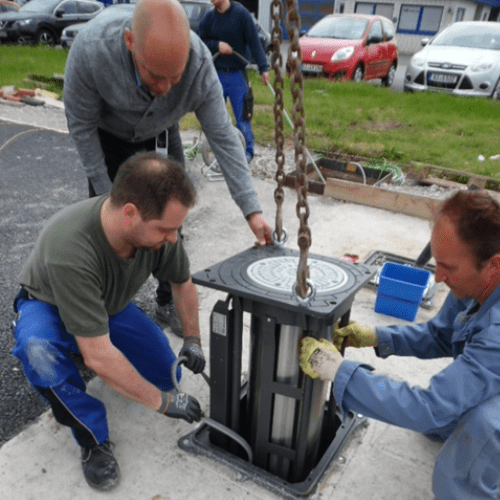
Bollards are a highly useful and dependable means of demarking, protecting and securing a broad range of public and private indoor and outdoor spaces. But like any other element of the built environment, bollards require regular maintenance to ensure that they function optimally and look as attractive as possible. Today we are going to look at key bollard maintenance issues.
How bollards get damaged
Understanding how bollards get damaged is fundamental to effective bollard maintenance. There are two primary sources of damage.
Physical environment
Bollards are designed to withstand inclement weather and adverse environmental conditions, but over time these forces take a toll. Fierce winds, heavy rain, snow, ice and even brilliant sunshine can all compromise bollard integrity. Bollards installed in high-saline locations subject to saltwater spray or de-icing salts, as well as those installed in high-traffic areas with an abundance of particulates and other pollutants, are all vulnerable to damage.
People
Many bollards are installed to serve as visual aids to drivers, not all of whom drive with utmost care and skill. And then there are individuals who drive into bollards deliberately for a variety of dubious reasons. Getting struck by vehicles or other blunt objects is a reality of bollard life. In addition, it’s not rare for bollards to be vandalized by taggers with cans of spray paint or to be compromised by well-intended but misguided efforts at bollard maintenance.
Bollard inspection
Regular inspection is key to bollard maintenance. As for inspection frequency, this varies with bollard type, the environment in which they are installed and realities such as manpower availability. It’s reasonable to suggest, however, that bollards installed in harsh or heavily trafficked environments should be inspected weekly, while those in less challenging situations should be inspected monthly.
What to check for in a bollard inspection:
- Accumulation of dirt, salt or residue from the atmosphere
- Vandalism such as graffiti
- Dents
- Rust
- Cracks, scrapes and scratches
- Performance decline (particularly with retractable bollards)
- Loose fixings and fittings
Bollard inspections usually reveal little deterioration as bollards are robust structures built to last. That said, having spare bollard fittings and fixings with you during an inspection may allow you to execute a repair right away and save a return trip.
Another dimension of bollard inspection is judging whether a bollard is damaged beyond your ability to maintain it. If you determine this to be the case, you should engage a bollard professional to carry out the required repair or to replace the bollard.
Bollard maintenance
Approaches to bollard maintenance vary depending upon the base material from which the bollard is constructed. Fine-tuning your maintenance program with regards to the products and devices you use is crucial to keeping your bollards at a high standard in terms of utility and attractiveness, as well as inadvertently damaging them further.
Regardless of base material, you generally want to clean your bollard with warm soapy water or warm water mixed with detergent. Simply doing this will remove a great deal of surface grime and greatly improve bollard appearance. A soft brush should be used, preferably nylon, and the bollard should always be rinsed and dried with a soft cloth.
Scrapes, scratches, and graffiti are common forms of surface damage, while dents and rust affect the structural integrity of a bollard. All forms of damage should be treated as soon as possible to avoid further deterioration. Removing traces of rust is particularly critical. For significant damage, such as cracked or broken components or missing parts, bollards shoud be taken out of service until repaired or replaced.
Winterizing removable and retractable bollards
In cold climates found in much of Canada and the northern US implementing winterizing processes for removable or retractable bollards is vital to extending bollard life. Retractable and removable bollards have mechanical components that require ongoing maintenance. In winter, below-ground receivers can be susceptible to corrosion and/or seizing if exposed to significant amounts of rain, snow, ice, and/or de-icing chemicals. A typical winterizing process for removable and retractable bollards includes extraction of the bollard, removal of debris and moisture and lubrication. Doing this in late summer or early fall helps prepare bollards for harsh winter conditions, which greatly extends their lives.

All Ontario Bollards products are manufactured with high quality materials for premium aesthetics and long-term durability. With regular inspection and ongoing maintenance, Ontario Bollard products will provide years of service.
Contact
Understanding how to properly inspect and maintain bollards pays huge dividends in terms of time and money saved—not to mention the positive impact on your business of having attractive, well-maintained bollards. To learn more about Ontario Bollard products—and how to maintain them—please click here.

Comments are closed